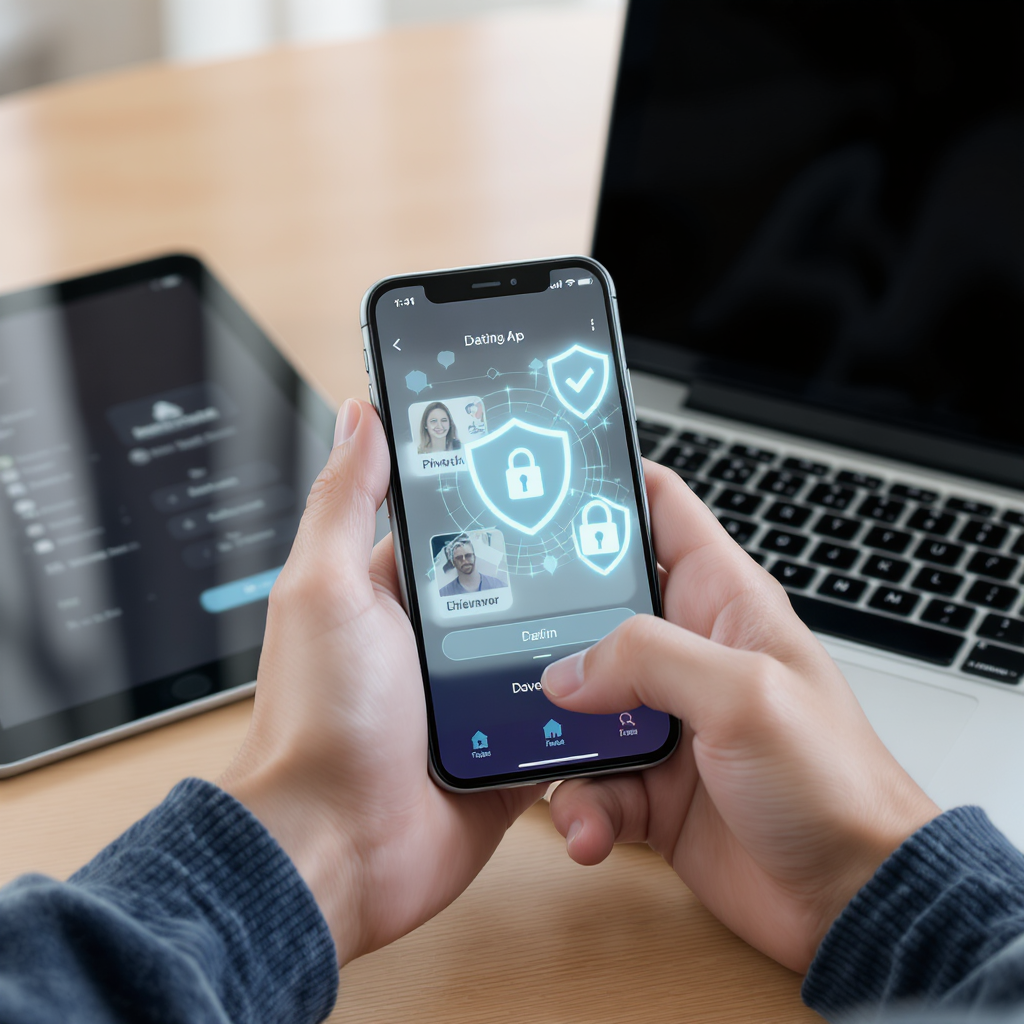Comprehensive Guide to Digital Privacy in Online Dating

Preparing for Safe Online Dating: Understanding and Setting Up Your Digital Privacy
1. Gather Essential Tools and Information
- Requirements checklist:
- A device with internet access (smartphone, tablet, or computer)
- Access to your chosen dating app or website
- An email account dedicated to online dating (recommended)
- A password manager app (optional but highly recommended)
- Basic knowledge of privacy settings in apps
Safety Note: Using a separate email for dating apps helps contain potential data breaches and spam.
2. Learn About Key Privacy Concepts
- Digital privacy: Protection of your personal data from unauthorized access or sharing.
- Two-Factor Authentication (2FA): An extra security step requiring a second form of verification beyond your password.
- Profile Verification: Methods used by apps to confirm your identity (e.g., photo verification).
- AI-generated content: Digital images or messages created by artificial intelligence, which may be used to deceive users.
3. Review Privacy Policies Before Signing Up
- Visit the dating platform’s website and locate their privacy policy.
- Look for clear explanations on:
- What data is collected
- How data is used
- Who data is shared with
- User rights over their data
Warning: Avoid platforms that do not clearly state their privacy and data protection measures.
4. Set Up Strong Security Foundations
- Create a unique, complex password for your dating app account.
- Use a password manager if possible to store and generate secure passwords.
- Enable Two-Factor Authentication (2FA) in the app’s security settings if available.
Time estimate: 15-20 minutes
Step-by-Step Process to Ensure Digital Privacy While Online Dating
1. Create Your Dating Profile Safely
a. Use Recent and Genuine Photos
- Avoid using photos that are outdated or from social media.
- Prefer photos that clearly show you without excessive filters.
b. Limit Personal Information
- Only provide necessary details (e.g., first name, approximate age).
- Avoid sharing exact location, workplace, or sensitive personal data in your profile.
Tip: Use app settings to control who can see your profile details.
2. Verify Profiles and Recognize AI-Generated Content
a. Use Built-In Verification Features
- Participate in photo or video verification processes offered by the app.
b. Perform Reverse Image Searches
- Copy profile pictures and use reverse image search tools (e.g., Google Images) to check for duplicates or fakes.
c. Watch for Signs of AI Content
- Be cautious if messages seem overly polished, generic, or inconsistent.
- Question profiles with limited or no social media presence.
Time estimate: 10-15 minutes per profile when verifying
3. Communicate Securely and Protect Your Data
a. Avoid Sharing Sensitive Information Early
- Do not disclose your full name, address, financial details, or personal ID information.
b. Use the App’s Messaging System Initially
- Avoid moving conversations to SMS or third-party apps too quickly.
c. Monitor for Scam Indicators
- Be alert to requests for money, gifts, or private information.
Warning: If you suspect fraudulent behavior, report the user to the platform immediately.
4. Regularly Update Your Security Settings
- Review privacy and security settings monthly.
- Remove or block suspicious or inactive profiles.
- Update passwords every 3-6 months.
Tip: Stay informed about new app features or security updates via official sources.
Verifying Your Digital Privacy and Troubleshooting Issues
1. Confirm Account Security
- Test logging in with your password and 2FA to ensure they work correctly.
- Check recent login activity if the app provides this feature.
2. Validate Profile Verification Status
- Ensure your profile is marked as “verified” after completing the platform’s procedures.
3. Troubleshoot Common Privacy Issues
a. If You Receive Suspicious Messages
- Block and report the sender.
- Change your password immediately.
b. If You Suspect Your Data Has Been Compromised
- Review app’s privacy policy for data breach procedures.
- Contact app support for assistance.
- Consider temporarily disabling or deleting your account.
c. If Verification Fails
- Retake verification photos following app guidelines.
- Contact customer support for help.
4. Maintain Ongoing Privacy Awareness
- Regularly check for news about scams or AI-generated content trends.
- Educate yourself on new security features or legislation such as Utah’s Digital Choice Act.
Checkpoint Summary: By completing these steps, you ensure your online dating experience is safer, your personal data is protected, and you are empowered to recognize and avoid common digital privacy pitfalls.
Remember: Protecting your digital privacy in online dating is an ongoing process. Stay vigilant, use the tools and techniques outlined here, and trust your instincts. You have the power to enjoy meaningful connections while keeping your personal information safe and secure.
Advanced Privacy Configuration and Customization in Online Dating Platforms
Tailored Privacy Settings Beyond Defaults
- Granular Profile Visibility Controls: Use advanced settings to restrict profile visibility by location radius, age brackets, or specific user groups.
- Custom Block Lists and Filters: Create and maintain custom filters to automatically block or hide profiles based on keywords, behaviors, or flagged criteria.
- Data Sharing Preferences: Explore app-specific options to limit data sharing with third parties or disable data-driven advertising.
Implementation Steps
- Navigate to your dating app’s privacy or security dashboard.
- Locate advanced visibility or filter settings.
- Configure specific geographic or demographic visibility settings.
- Add keywords or profile characteristics for automatic filtering.
- Opt out of data sharing where options are presented.
Warning: Overly restrictive visibility settings may reduce match opportunities; balance privacy with usability.
Encrypted Communication Channels
- Utilize apps or extensions offering end-to-end encryption (E2EE) for messaging.
- Integrate secure messaging protocols or third-party encrypted platforms for sensitive conversations after initial trust establishment.
Multi-Layered Authentication and Access Controls
- Beyond 2FA, enable biometric authentication (fingerprint, facial recognition) for app access.
- Use hardware security keys (e.g., YubiKey) if supported by the platform for enhanced login security.
Optimization Techniques for Enhanced Digital Privacy and User Experience
AI-Powered Profile Authenticity Analysis
- Employ third-party or integrated AI tools that analyze profile images and text for signs of manipulation, duplication, or AI-generation.
- Automate batch reverse image searches for match lists to streamline verification.
Behavioral Pattern Analysis
- Use app analytics or personal logs to identify unusual communication patterns indicative of bots or scammers.
- Set up alerts for rapid message frequency, generic responses, or repeated suspicious phrases.
Automation of Privacy Maintenance Tasks
- Schedule automatic periodic password changes using password manager features.
- Automate privacy setting audits with scripts or app reminders to ensure configurations remain optimal.
Secure Backup and Recovery Planning
- Regularly export encrypted backups of important chat logs and profile data.
- Establish secure recovery channels in case of account compromise.
Expert-Level Troubleshooting and Incident Response
Advanced Incident Detection and Response
- Monitor account activity logs for IP changes, simultaneous logins, or unfamiliar device access.
- Use SIEM (Security Information and Event Management) tools for users with multiple accounts or professional dating services.
Handling Sophisticated Scams and AI-Driven Threats
- Employ forensic analysis techniques on suspicious profiles, including metadata examination of photos and message timestamps.
- Collaborate with platform support using detailed evidence reports.
Recovery Workflow After Data Breach or Account Compromise
Step-by-Step Procedure
- Immediately change all related account passwords.
- Revoke all active sessions and devices from account settings.
- Enable or re-enable advanced authentication methods.
- Notify contacts within the app about potential compromise.
- Contact platform security teams with detailed logs.
- Monitor for unusual activity continuously for at least 90 days.
Integrating Privacy Best Practices into Daily Usage
- Regularly update devices and apps to patch vulnerabilities.
- Utilize VPN services when accessing dating platforms from public or unsecured networks.
- Educate oneself continuously on emerging AI threats and privacy legislation to adapt strategies accordingly.
Professional Tip: Maintaining a privacy incident journal can help identify patterns and improve future preventative measures.

Celebrating Your Achievement and Verifying Mastery
Recognizing Your Progress
Congratulations on completing this comprehensive guide on digital privacy in online dating! You’ve taken significant strides in protecting your personal information, recognizing potential threats, and confidently navigating online dating platforms with enhanced security. Your dedication to safeguarding your digital presence is commendable and sets a strong foundation for safe and enjoyable online interactions.
Skill Verification Checklist
- Understand and apply key digital privacy concepts such as Two-Factor Authentication and profile verification.
- Successfully set up strong security measures including unique passwords and dedicated email accounts.
- Demonstrate ability to identify and verify genuine profiles while spotting AI-generated or fraudulent content.
- Consistently manage communication securely and avoid sharing sensitive data prematurely.
- Regularly audit and update your privacy settings to adapt to evolving platform features and threats.
- Effectively troubleshoot common privacy issues and respond promptly to suspicious activities.
If you can confidently affirm these skills, you have mastered the essential techniques for maintaining privacy and safety in online dating environments.
Pathways for Continued Learning and Skill Enhancement
Expanding Your Privacy Expertise
- Explore advanced privacy configurations such as granular visibility controls and encrypted communication channels.
- Stay abreast of emerging AI technologies and evolving scam tactics through trusted cybersecurity blogs and online courses.
- Practice using third-party AI tools for profile authenticity analysis and behavioral pattern detection.
Developing Practical Experience
- Regularly apply learned techniques by reviewing your dating app settings and performing profile verifications.
- Engage with online communities focused on digital privacy and online dating safety to exchange tips and real-world experiences.
Leveraging Formal Education
- Consider enrolling in cybersecurity or digital privacy workshops to deepen your understanding.
- Follow updates on relevant legislation, such as Utah’s Digital Choice Act, to remain informed of your rights and protections.
Resources for Ongoing Support and Troubleshooting
Trusted Help and Information Sources
- Official support channels of your dating platforms for account and privacy issues.
- Reputable cybersecurity websites and forums for threat alerts and security best practices.
- Password manager providers offering tutorials and automated security features.
Community and Professional Networks
- Join online groups or forums dedicated to online dating safety and digital privacy.
- Connect with privacy advocates and cybersecurity professionals through social media or local meetups.
Staying Updated
- Subscribe to newsletters or alerts from privacy organizations and technology news outlets.
- Monitor app updates and security patches regularly to utilize new protective features promptly.
Remember: Mastery of digital privacy in online dating is a dynamic journey. Your proactive approach, continuous learning, and the use of available resources will empower you to maintain control over your personal data while fostering meaningful, secure connections. Stay vigilant, stay informed, and enjoy your safe online dating experiences with confidence!

